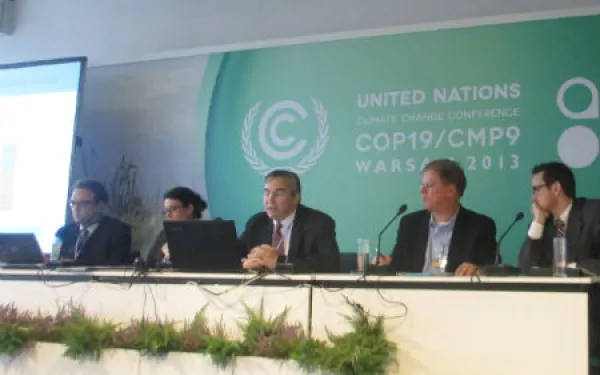
Project
Photo: Steven Ablitt / Cassiar WatchVictory: Canada supports public participation and environmental assessment
Thanks to a court ruling to which AIDA and our allies contributed, Canadian authorities must allow active participation in all mining and industrial megaprojects, as well as comprehensive environmental impact assessments.
The decision came after a long legal battle that began in 2006. That year, an open-pit copper and gold mine called Red Chris was approved without the adequate evaluation of its environmental impacts. It was sleighted to process 30 thousand metric tons a day.
The Imperial Metals company intended to build the mine in the Kapplan River Valley, a remote and pristine natural area home to large mammals such as Dali’s sheep, caribou, bears and moose. In addition, the area is part of the migratory salmon route and the Tathlan indigenous community lives nearby.
The company had fragmented the project into small parts to avoid evaluating the full impact of the project, thus violating international standards and the right to public participation.
In 2009 AIDA filed a brief with Canada’s Supreme Court in support of a lawsuit filed against the project by MiningWatch and Ecojustice.
The ruling remains a powerful tool to protect huge expanses of pristine and valuable land for its biodiversity, water sources, and the culture of indigenous communities.
It was a watershed moment in terms of ensuring companies fulfill their obligations when developing projects that put at risk the natural environment and those who depend on it.
Related projects
Almost 16,000 people urge Colombian President Santos to demarcate the Santurbán páramo
In a petition to the Presidency and the Ministry of Environment, thousands of people are calling on the government to define the boundaries of this fragile ecosystem at a scale of 1:25,000 as required by Colombian legislation. Bogota, Colombia—The Interamerican Association for Environmental Defense (AIDA) sent to Colombian President Juan Manuel Santos and his minister of environment and sustainable development, Luz Helena Sarmiento, the signatures of 15,901 individuals calling for the demarcation of the Santurbán páramo to be based on proper scientific criteria at a scale of 1:25,000. The Santurbán páramo, located in the Colombian departments of Santander and Norte de Santander, provides water to nearly two million people, mainly in the cities of Bucaramanga and Cúcuta. The signatures collected over Change.org, the world’s largest petition platform, follow a previous request (in Spanish) by AIDA and prestigious Colombian environmentalists for the government to properly define the borders of the páramo in compliance with national legislation and international standards. This would prevent harmful activities such as large-scale mining from irreversibly damaging this fragile high-altitude wetland ecosystem. Páramos are "water factories" that contain a unique biodiversity and help mitigate climate change. In Colombia, home to the greatest number of páramos in the world, delimitation of this ecosystem is required under national law. That makes this petition even more important because the delimitation of the rest of the country’s páramos could depend on the outcome of the Santurbán decision. The petition promoted by AIDA includes a letter to President Santos and Minister Sarmiento. In the letter, the signatories call on the minister to recognize the entire páramo (more than 82,000 hectares) in the definition of its borders, not just the fraction (11,000 hectares) declared as a Regional Natural Park. For this to happen, the petition calls on the government to apply the parameters already established by Colombian scientists and provides legal arguments to support this requirement. Together with the signatures, AIDA has included a document that analyzes the legal reasons why the government should fully delimit this area (Available in Spanish, here). “Heeding the call of the thousands of signatories in the hemisphere is urgently needed because the risk to the páramos from mining is imminent," said Astrid Puentes Riaño, AIDA co-executive director. "Delineating Santurbán to a scale other than the ratio of 1:25,000 prescribed by the National Development Plan goes against the law. If the minister delimits the moor at a less detailed scale, the decision could be challenged in court.” AIDA's action comes as the Committee for the Defense of Santurbán Páramo holds a protest to protect this valuable ecosystem on November 15 in Bucaramanga. The petition and letter can be read at Change.org.
Read more
The reduction of HFCs and methane emissions
By Andrea Rodríguez, legal advisor, AIDA, @arodriguezosuna, and Mónica Valtierra, AIDA volunteer Warsaw, Poland - The reduction of hydrofluorocarbons (HFCs) and methane gas emissions has enormous potential to help in the fight against climate change under the framework of the Montreal Protocol and through the development of clean technologies designed to reduce greenhouse gas emissions from refrigerants, air conditioners and vehicles. Mark W. Roberts, a senior counsel and international policy advisor at the Environmental Investigation Agency (EIA), made this point during Catalyzing Pre-2020 Mitigation Action – Phasing down HFCs and Reducing Methane Emissions event at the 19th Conference of the Parties (C0P19) to the United Nations Framework Convention on Climate Change (UNFCCC) in Warsaw, Poland. He reminded listeners that short-lived climate pollutants (SLCPs), which include HFCs and methane, may have a relatively short lifespan in the atmosphere but they have a global-warming potential (GWP)much greater than CO2. This means that action to reduce these particular pollutants will have substantial short-term climate benefits. Among the activities to reduce of HFCs we have the use of ammoniums, hydrocarbons, methyl formats and other technologies that involve the sustainable use of CO2. He also suggested the implementation of alternative manufacturing processes for aerosols and fiber materials, the use of dry powder for asthma inhalers and the use of solar energy for refrigeration and air conditioners. Roberts said the scope of the Montreal Protocol includes the reduction of 8 billion tonnes of CO2 since 1980, five times more than the goal established in the Kyoto Protocol between 2008 and 2012. The United States and Canada have proposed amendments to the Montreal Protocol that would help to dramatically reduce the consumption of HFCs, he added. Along the same vein, the representative of the United Nations Industrial Development Organization (UNIDO) mentioned the importance of implementing the Montreal Protocol for the global reduction of HFCs. With regard to financing mechanisms, he said the Global Environment Facility (GEF) could be an alternative for developing countries without access to the Multilateral Fund for the Implementation of the Montreal Protocol. He also highlighted UNIDO’s role in promoting new technologies based on ozone-friendly chemicals and improvements in manufacturing processes in developing countries. As an example of the latter, he cited a project in which 10 companies in the Philippines had reduced their use of HFCs by 10%. He also mentioned the recent launch of the Climate and Clean Air Coalition, which seeks to reduce HFCs emissions and put the reduction of SLCPs on the agenda. At the same time, Markus Kurdziel, a consultant for BMZ in Germany, spoke about projects the German government is working on with public agencies and the private sector for refrigerants, air conditioning and foam production. These projects are part of Proklima, a program supported by 40 countries with the following areas of action: political consulting, technology transfer, research, subsidies development, technological adaptation, emissions reduction and the implementation of bilateral strategies. As an example, Kurdziel mentioned projects in China and India where the governments there helped private companies in the manufacturing of air conditioners with 15% greater efficiency. In Brazil, the initiative implemented a program to recover and recycle refrigerators. Also at the event, representatives of the International United Steelworkers Union said U.S. natural gas networks were leaking a combined total of around 6 million cubic feet of gas because of old and deteriorated pipes. In response, David Foster of the Blue Green Alliance called for greater efforts to repair the pipes to prevent methane gas from escaping into the atmosphere, a project that he said would create millions of jobs in the United States. The event closed with a message. We must take action to reduce methane and HFCs emissions -- and we must do it now. For more information, see the document (in Spanish) about short-lived climate pollutants that AIDA, CEDHA, CEMDA and RedRacc presented at COP19.
Read more
Short-lived climate pollutants: An opportunity to reduce emissions
AIDA together with CEDHA, CEMDA and RedRacc have produced a briefing paper on short-lived climate pollutants (SLCPs) for presentation at the 19th Conference of the Parties (COP19) on climate change, which is running November 11 to 22 in Warsaw, Poland. SLCPs are agents that contribute to global warming and have a relatively short lifetime in the atmosphere, from a few days to a few decades. That’s different from CO2, which remains in the atmosphere for centuries or millennia after emission. CO2 contributes an estimated 55% to 60% to global warming, while the remaining 40-45% comes from the emission of SLCPs. The latter seriously affect human health and ecosystems, meaning that any reduction in their emissions also brings significant social benefits. The fact that these contaminants remain so little time in the atmosphere means that their mitigation brings short-term benefits, in particular to the most vulnerable regions of the world already suffering the impacts of climate change. We must seize the opportunity to reduce SLCPs in the fight against the effects of this global challenge. Our paper explains what SLCPs are, which are the most relevant ones, and what are the reasons we should work to regulate and reduce their emissions. The paper also provides recommendations for taking on the challenge. Read the Fact Sheet (in Spanish)
Read more